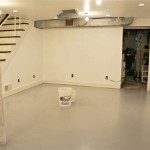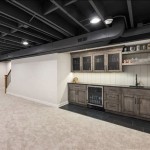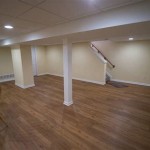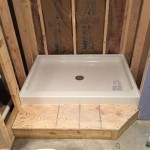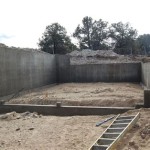Sump Pump in Finished Basement
Protecting your finished basement from water damage is essential, and a sump pump plays a crucial role in this regard. Sump pumps are devices installed in the lowest part of a basement, designed to remove excess water that might accumulate due to rain, snowmelt, or other sources. Water seepage can cause significant damage to your basement, including mold growth, structural issues, and ruined belongings.
If you're considering finishing your basement, installing a sump pump is highly recommended. It provides peace of mind and helps protect your investment. However, installing a sump pump in a finished basement requires careful planning and execution to ensure it doesn't compromise the aesthetics of the space.
Types of Sump Pumps
There are two main types of sump pumps:
- Pedestal sump pumps: These pumps sit above the sump basin and are connected to a discharge pipe that leads water away from your home. Pedestal pumps are affordable and easy to install, but they may be noisier than submersible pumps.
- Submersible sump pumps: These pumps sit submerged in the sump basin and pump water up and out of the basin through a discharge pipe. Submersible pumps are quieter than pedestal pumps, but they require a sealed sump basin to prevent water from leaking into the pump's motor.
Choosing the Right Sump Pump
When selecting a sump pump for your finished basement, consider the following factors:
- Pump capacity: Measured in gallons per hour (GPH), this indicates how much water the pump can remove. Choose a pump with a capacity that exceeds the potential water inflow into your basement.
- Discharge head: This refers to the vertical height the pump can lift water. Determine the height from the sump basin to the discharge point and choose a pump with sufficient discharge head.
- Backup system: Power outages can compromise sump pump operation. Consider installing a battery-powered backup system or a sump pump with a built-in backup battery.
- Size and noise level: If aesthetics is a concern, opt for a compact and quiet pump that can be easily concealed in your finished basement.
Installation Considerations
Installing a sump pump in a finished basement requires careful planning to minimize disruption and maintain the aesthetics of the space. Consider the following tips:
- Choose a strategic location: The sump basin should be placed in the lowest part of the basement, away from walls and corners.
- Create a concealed sump basin: Use a basin cover or build a decorative box around the basin to hide it from view.
- Route the discharge pipe discreetly: Run the discharge pipe along walls or through crawl spaces to minimize visibility.
- Use soundproofing materials: Place rubber mats under the pump or use sound-absorbing materials around the sump basin to reduce noise.
Maintenance and Testing
Regular maintenance is crucial to ensure the proper functioning of your sump pump. Follow these tips:
- Inspect the pump regularly: Check for any debris or clogs that may hinder the pump's operation.
- Test the pump periodically: Fill the sump basin with water and observe if the pump turns on and pumps water effectively.
- Replace the battery in backup systems: Ensure backup batteries are fully charged and replaced regularly.
- Clean the sump basin: Remove any sediment or debris that may accumulate over time.
Conclusion
Installing a sump pump in a finished basement is an essential step in protecting your investment from water damage. Choosing the right pump, careful installation, and proper maintenance are crucial for effective operation. By following these guidelines, you can ensure your finished basement remains dry, safe, and aesthetically pleasing.

Do You Need A Sump Pump In Finished Basement

Basement Sump Pump Installation 101 Kc Waterproofing

Sump Pumps Advances And Installation Waterproof Magazine

Sump Pump In Finished Basement

Do You Need A Sump Pump In Finished Basement

Do You Need A Sump Pump In Finished Basement

Do You Need A Sump Pump In Finished Basement

Sump Pump In Finished Basement

Basement Sump Pump House With Sani Tred

Why Doesn T My Basement Have A Sump Pump Avalon Home Inspections
See Also

